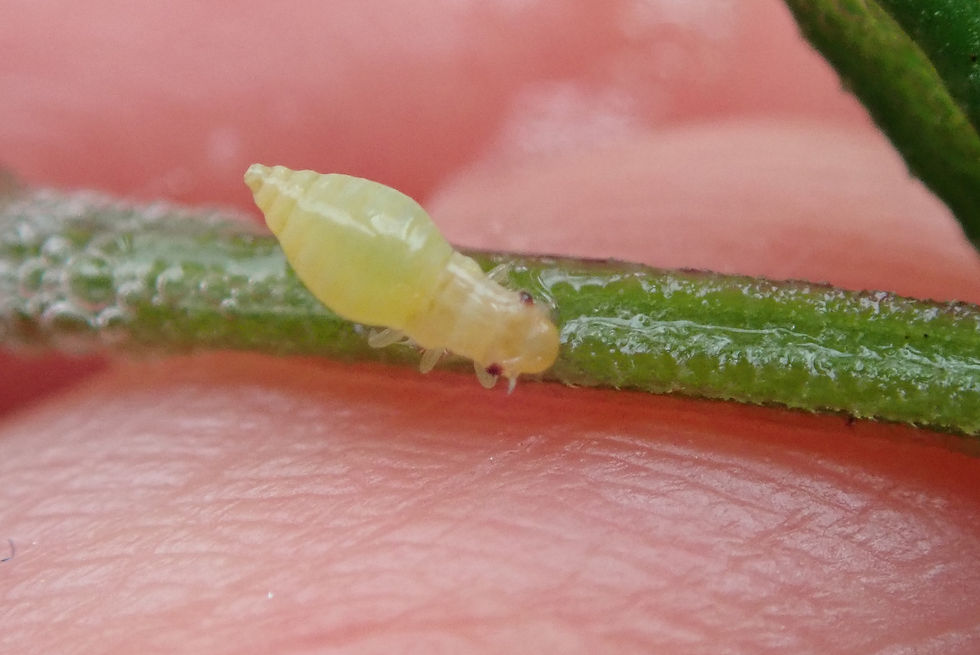Nymph knowhow!
- Dr Claire Harkin

- May 20, 2019
- 1 min read
Updated: May 26, 2019
So, once you've spotted your spittle, how on earth do you know which froghopper species you might be looking at? Well, a reasonable starting point is that, if the spittle is on a woody shrub or tree, it's likely to be one of the Aphrophora species (Aphrophora alni being the most common). If the spittle is on a grass, it's likely to be one of the Neophilaenus species (Neophilaenus lineatus being the most common), and if it's on a herbaceous plant, it's likely to be Philaenus spumarius.
So how can you be sure this distinction is correct? A way of testing it out with the younger instars is to then uncover the nymph itself. Early instars of Neophilaenus species have a brown band where the developing wing buds or pads are, which you can see on this little chap that Dr Alan Stewart and I uncovered during our fieldtrip to Burwash today. It looks to be in its second instar:
Whereas Philaenus spumarius (this one making its home on some lavender in my garden) don't have these markings:
We don't know if the brown banding continues throughout all of the Neophilaenus instar stages; this is something we'll be looking at over the course of the season - watch this space! And of course, if you do spot any of these little fellas, please let us know by reporting it on our iRecord site.







Comments